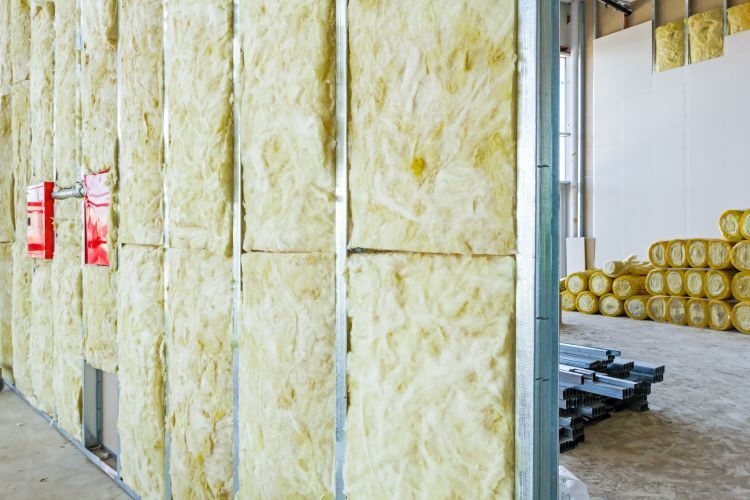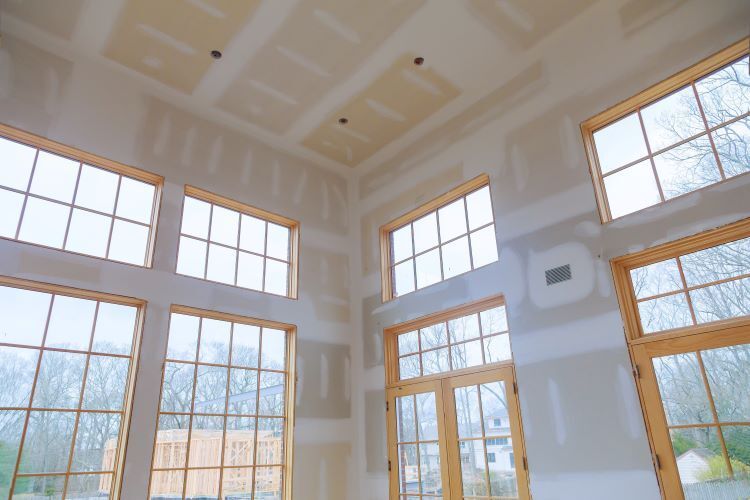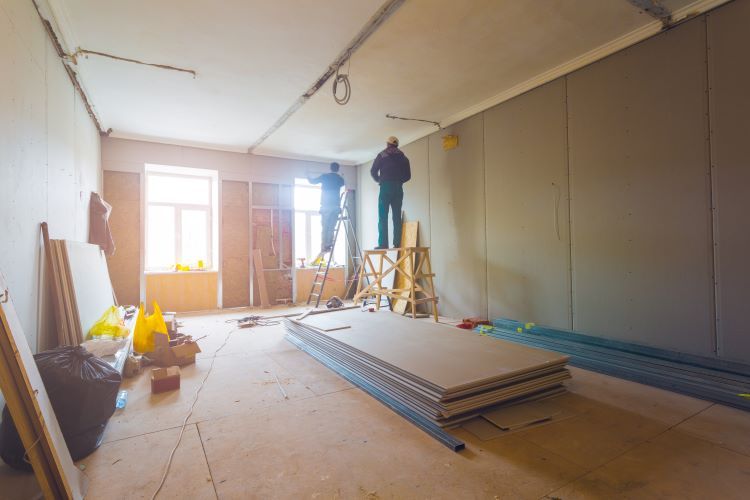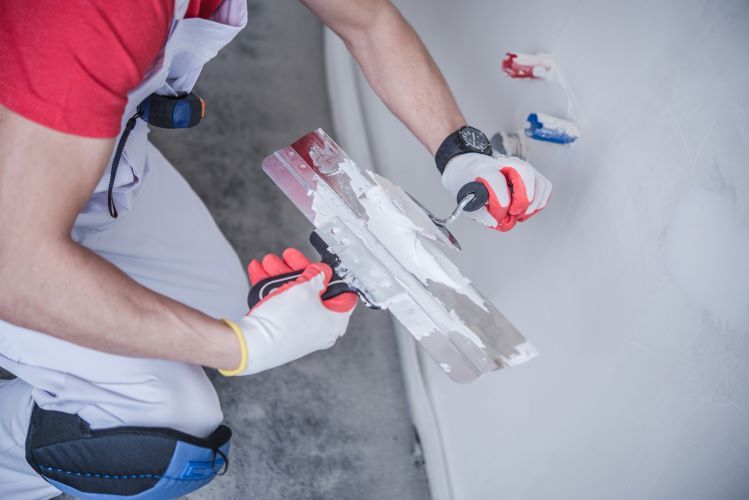How Drywall and Insulation Work Together

When constructing or renovating a home, two elements often work behind the scenes to provide comfort and energy efficiency: drywall and insulation. While they serve distinct functions, drywall and insulation work together to ensure that your home is both thermally efficient and structurally sound. At St. John's Drywallers, we understand the importance of a well-insulated home, especially in Newfoundland’s unique climate, where extreme temperatures can be a challenge.
In this article, we'll explore how drywall and insulation function together, enhancing both the comfort and energy efficiency of your home.
The Role of Drywall in Your Home
Drywall, also known as gypsum board or plasterboard, is the most common wall material used in residential construction. Its primary purposes are to create a smooth, finished surface for walls and ceilings, offer a base for painting and decorating, and provide a degree of soundproofing. However, drywall alone doesn’t have significant insulation properties. That's where insulation comes into play.
The Role of Insulation in Your Home
Insulation is a critical component of any home. It helps regulate the indoor temperature by reducing heat transfer between the inside and outside. Insulation works year-round, keeping your home warm in the winter and cool in the summer. It also enhances energy efficiency, helping to lower heating and cooling costs by reducing the need for artificial temperature control.
There are various types of insulation used in home construction, including:
- Fiberglass insulation: A popular, cost-effective option made from fine glass fibers.
- Spray foam insulation: Expands to fill gaps and is particularly effective in hard-to-reach areas.
- Rigid foam insulation: Often used in basements or attics where moisture might be a concern.
- Blown-in cellulose insulation: Made from recycled paper and treated with fire retardants, it's commonly used in attics.
Each type of insulation works with the drywall to ensure optimal thermal performance, but their effectiveness is maximized when installed correctly together.
How Drywall and Insulation Work Together
The collaboration between drywall and insulation goes beyond simple installation. These two materials create a system that supports thermal regulation, soundproofing, and even moisture control within your home. Here’s how they work together:
1. Thermal Efficiency
Insulation acts as a barrier that slows down the movement of heat. Whether it's during Newfoundland’s cold winters or warm summers, insulation prevents the transfer of heat through the walls, keeping your indoor environment stable. Drywall, on the other hand, acts as the outer layer that encases the insulation, helping seal the system and providing a smooth surface for finishing. When drywall is installed over well-placed insulation, it enhances your home’s overall thermal efficiency by reducing heat loss and air leaks.
2. Soundproofing
Insulation isn’t just for temperature regulation; it also plays a vital role in soundproofing your home. Insulating materials like fiberglass and spray foam help reduce the transmission of sound between rooms. When paired with drywall, these materials create a sound barrier that makes for quieter, more peaceful living spaces. For homes in noisy areas or multi-story homes where sound travels between floors, adding soundproof drywall combined with insulation can drastically reduce noise pollution.
3. Moisture Control
One of the most significant risks to drywall is moisture. Insulation can help regulate the moisture levels within your walls, preventing condensation and the resulting damage, such as mold or mildew. Vapor barriers, installed alongside insulation, can block moisture from penetrating your walls. This prevents issues like drywall warping, paint peeling, and mold growth. In St. John's, where the weather can be damp, ensuring proper moisture control with the right insulation and drywall setup is crucial for long-term durability.
4. Energy Efficiency
By creating a well-insulated barrier within your walls, drywall and insulation work together to reduce the amount of energy your home uses for heating and cooling. With a well-insulated and sealed home, you can prevent air leaks, minimizing the workload on your HVAC system and significantly lowering your energy bills. In regions like Newfoundland, where heating can be a major expense, proper insulation and drywall installation can make a noticeable difference in energy consumption.
5. Fire Resistance
Some types of drywall, such as fire-resistant or Type X drywall, are specifically designed to slow the spread of fire. When combined with insulation, this adds an extra layer of safety. Fiberglass insulation, for example, is non-combustible and works well with fire-resistant drywall to provide enhanced protection for your home.
Choosing the Right Insulation and Drywall for Your Home
Different areas of your home may require different insulation and drywall combinations. Here are a few tips for choosing the right materials:
- Basements and Crawl Spaces: These areas are particularly prone to moisture, so consider using rigid foam or spray foam insulation combined with mold-resistant drywall. This setup will protect your walls from moisture and mold growth.
- Attics: For attic spaces, blown-in cellulose insulation is often the best choice, as it provides excellent thermal protection. Drywall installed in the attic should be thick enough to prevent heat loss and help maintain a consistent temperature.
- Interior Walls: If soundproofing is a concern between rooms, consider using thicker drywall (e.g., 5/8-inch) and soundproof insulation like mineral wool or fiberglass batts to reduce noise transmission.
- Exterior Walls: Focus on energy efficiency in exterior walls by using spray foam or fiberglass insulation combined with standard drywall for a well-sealed and insulated barrier against outdoor temperatures.
The Importance of Professional Installation
Proper installation of both drywall and insulation is essential to their performance. Gaps, improper vapor barrier placement, or insufficient insulation can reduce the effectiveness of your system, leading to higher energy costs and potential moisture issues.
At St. John's Drywallers, we specialize in both drywall installation and working with insulation professionals to ensure your home is not only comfortable but also energy-efficient and durable. Our team ensures that your drywall and insulation work together seamlessly, providing the best protection for your home against the elements.
Conclusion
Drywall and insulation form a crucial partnership in any home. Together, they improve energy efficiency, enhance comfort, and protect your home from noise and moisture. In St. John's, where weather extremes are common, ensuring that your drywall and insulation are working together efficiently is key to maintaining a cozy, energy-efficient home.
If you’re planning a renovation or new construction project and want to ensure your home’s insulation and drywall are installed properly, contact St. John's Drywallers. Our expert team is here to provide the highest quality drywall services, tailored to meet your specific needs.
You might also like



Book a Service Today
We will get back to you as soon as possible
Please try again later
St. John's Drywallers
Navigation
Navigation
Working hours
- Mon - Fri
- -
- Sat - Sun
- Appointment Only
*This is a referral website. All work is performed by professional, licensed contractors.